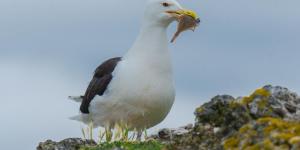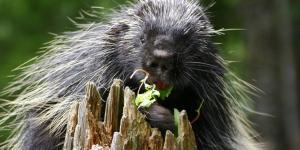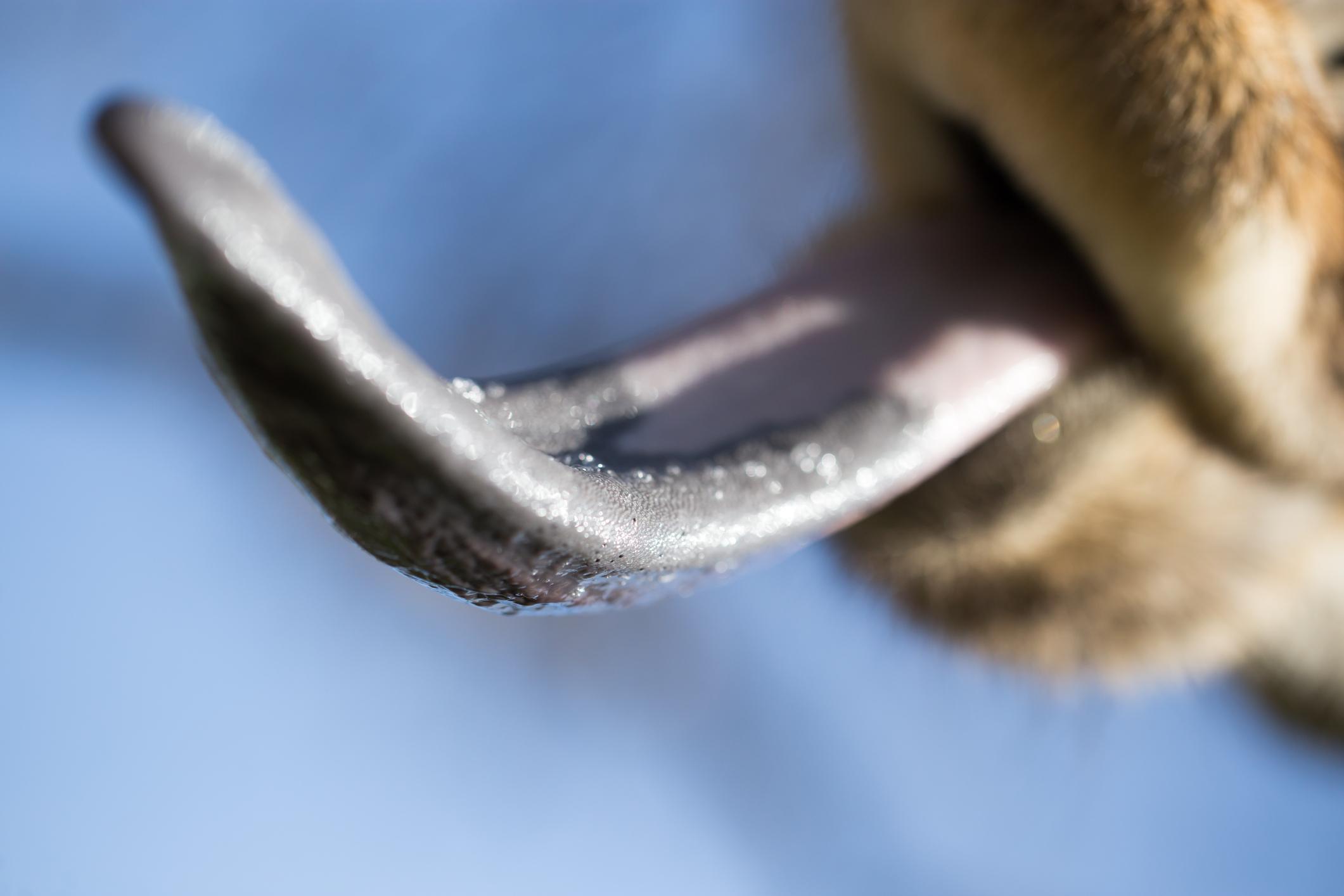What do giraffes eat?


Giraffes, with their towering height and graceful long necks, are among the most iconic creatures on Earth. These gentle giants are herbivores, meaning their diet consists solely of plants. But their unique feeding habits, characterized by both elegance and versatility, set them apart from other animals.
In this AnimalWised article, we will delve into the giraffe's diet and its unique digestive process. Additionally, we will explore the remarkable adaptations that giraffes have developed to thrive in their specific environment.
How giraffes eat and digest their food
Giraffes have evolved a specialized and complex digestive system that enables them to extract vital nutrients from their plant-based diet. Their ability to process and maximize the nutritional value of leaves and twigs is a testament to their remarkable adaptation to their environment.
Giraffes are known by their long necks, which help them reach high leaves and twigs, a useful adaptation in their natural habitat of open savannas and woodlands where grass is scarce. These long necks also assist them in spotting predators and communicating with other giraffes.
The evolution of their long necks is a result of natural selection. Giraffes with longer necks could access more food and had a better chance of avoiding predators. Over time, this led to an increase in the average neck length within the giraffe population.
Giraffes' unique feeding mechanism involves their long, dark-violet tongue and prehensile upper lip. Their tongue can extend up to 45 centimeters (18 inches), allowing them to reach leaves and foliage high up in trees. They use their tongue to strip leaves from branches, and their prehensile lip helps them grasp and manipulate the vegetation. The fine hairs on their lips protect their mouth from thorns and spines found on some plants.
After gathering leaves and twigs, giraffes use their large, well-developed molars to crush and grind their food into smaller pieces. This initial mechanical breakdown of plant material is a crucial step in the digestive process.
Giraffes have a four-chambered stomach, similar to other ruminant animals like cows and deer. These chambers include the rumen, reticulum, omasum, and abomasum. As a ruminant, giraffes initially store their food in the rumen and reticulum, where it undergoes fermentation by beneficial microorganisms. This process helps break down cellulose and extract nutrients from the plant material.
Rumination is a process where partially digested food is periodically regurgitated from the stomach chambers back into the mouth. In the case of giraffes and other animals, this regurgitated food is re-chewed and mixed with saliva to further break it down and enhance nutrient extraction. This allows giraffes to maximize the utilization of nutrients from their plant-based diet.
Furthermore, giraffes employ this two-stage digestive process, rumination, to extract as many nutrients as possible from their food. This method, while efficient, is time-consuming, resulting in a slow and deliberate digestion process.
Once the food has undergone initial fermentation and rumination in the stomach chambers, it moves on to the long intestines, which can extend over 60 meters (ca 196 ft) in length. Within the intestines, nutrients are absorbed, providing the giraffe with essential sustenance and energy. Finally, any undigested or waste material is expelled from the giraffe's body through the anus
Continue reading in this other article, where you will discover how these savanna giants communicate with one another through a range of vocalizations and body language.

The giraffe's diet
Giraffes, as herbivores, primarily consume plant material. They are browsers, favoring leaves, twigs, and occasionally grasses, flowers, and fruits when available.
Giraffes display versatility in their feeding habits. They can extend their necks to reach leaves from tall trees, graze on ground-level grass, and even lower themselves to drink from lakes and ponds.
Their grazing patterns typically occur during dawn and dusk in open areas, affording them a clear view of trees and heightened vigilance against potential dangers. Nevertheless, when food becomes scarce, giraffes are adaptable and can transition to different habitats.
Due to their substantial size, giraffes dedicate a significant part of their day to eating, consuming up to 75 kilograms (ca 165 pounds) of food daily.
Some of the plants that giraffes eat include:
- Acacia trees(Acacia spp.)
- Mimosa trees (Mimosa spp.)
- Apricot trees (Prunus armeniaca)
- Bushwillow (Combretum micranthum)
- Tamboti trees (Spirostachys Africana)
- African wattle (Peltophorum africanum)
- Jacket plum (Pappea capensis)
- Various grasses (Poaceae)
- Flowers
- Fruits
Their favorite food, though, is the leaves of Acacia trees. These leaves are rich in protein and calcium, which support the giraffes' growth. Additionally, they sometimes eat moist fruits and herbs, providing both nourishment and essential hydration, especially during dry periods.
Continue reading to explore the intriguing adaptations of the giraffe's tongue, which include its distinctive color and prehensile capabilities.

Amazing facts about the giraffe's diet
Here are some more curious facts about the giraffe's diet:
- Giraffes' unique digestive system allows them to extract nutrients from plants that other animals cannot digest.
- Giraffes regurgitate and re-chew their food to help digest it.
- Giraffes spend most of their day eating.
- Giraffes play an important role in the ecosystem by helping to control the growth of trees and shrubs. They also help to disperse seeds, which helps to promote plant growth.
- Giraffes sometimes eat bones and other animal products. This is thought to help them to get essential minerals that are not found in plants.
- Giraffes have been known to eat charcoal. This is thought to help them to absorb toxins from their food.
- Giraffes have even been known to eat plastic bags and other human-made objects. This can be dangerous for giraffes, as it can block their digestive system.
If you want to read similar articles to What do giraffes eat?, we recommend you visit our Healthy diets category.
- Annaliese Marrero. Giraffe: characteristics, habitat, reproduction and feeding . 2020, from lifer. Website: https://www.lifeder.com/jirafa/







